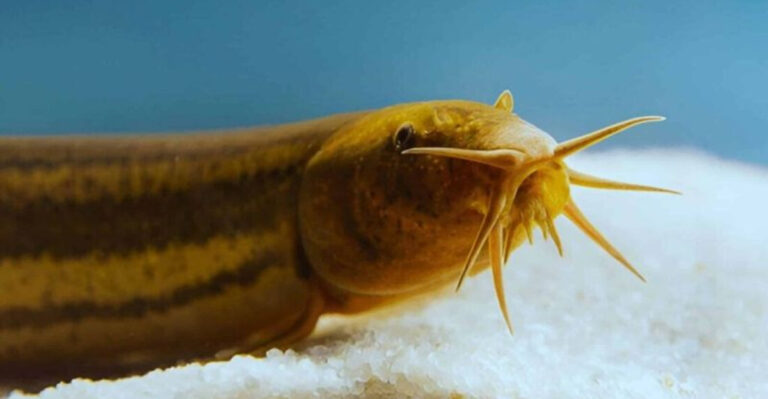10 Natural Ways To Keep Ants At Bay From Your Hummingbird Feeder
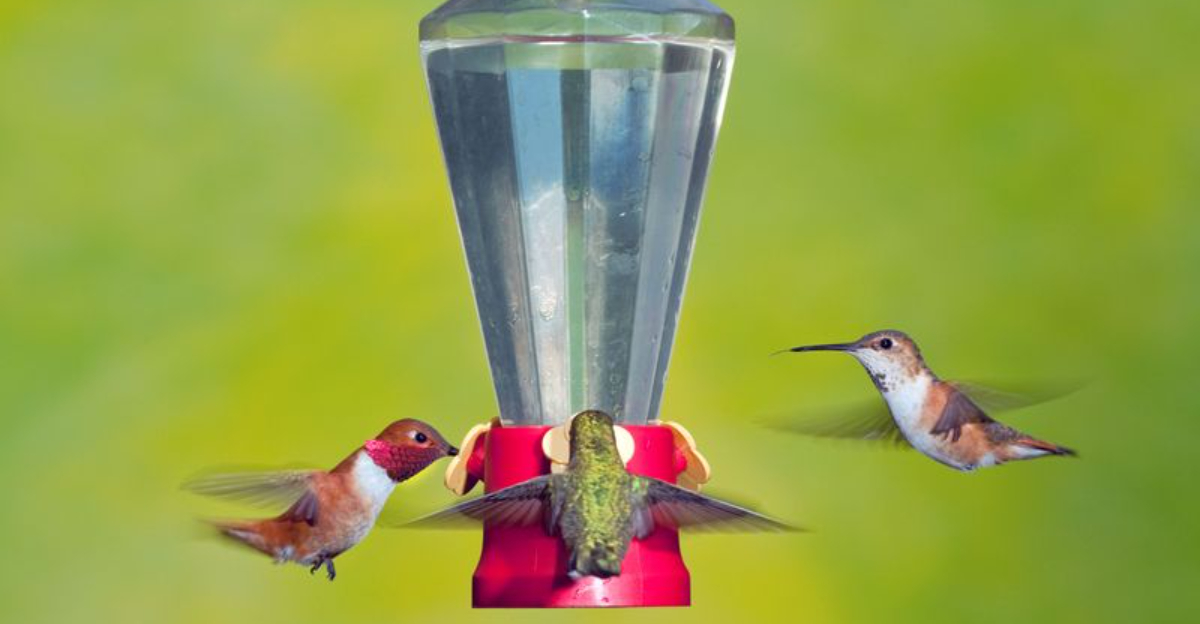
Hummingbirds bring joy to our gardens with their colorful feathers and zippy movements. But these tiny birds aren’t the only creatures attracted to sweet nectar feeders – ants love them too!
When ants invade your hummingbird feeder, they can contaminate the nectar and discourage birds from visiting. Fortunately, there are simple, natural solutions to keep those pesky ants away.
1. Use An Ant Moat
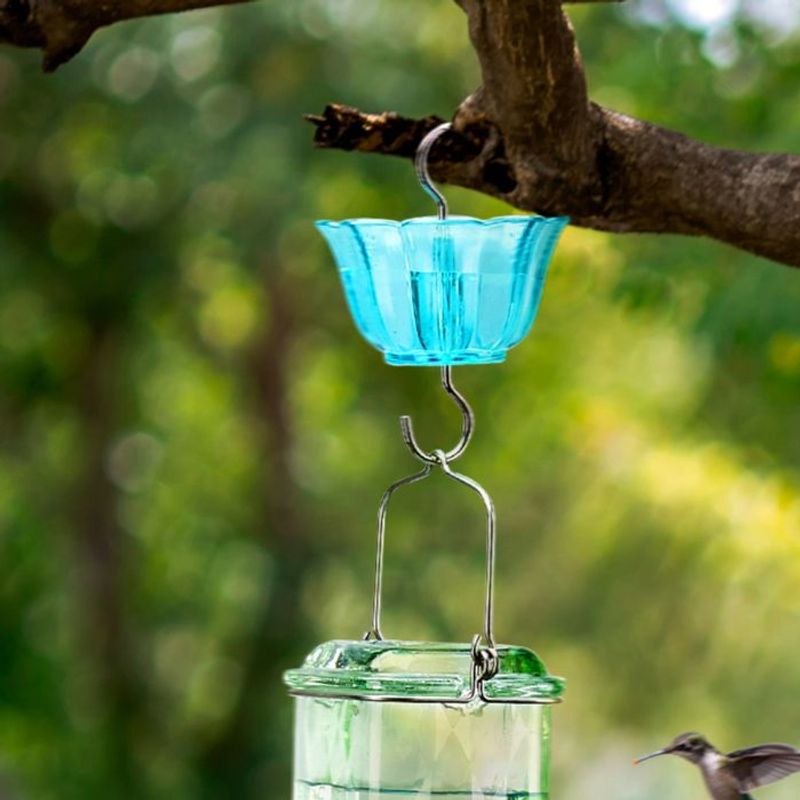
Ant moats work like tiny water barriers that prevent determined ants from reaching the sweet nectar. Fill a small cup-shaped device with water and hang it above your feeder.
The moat creates an impassable lake that ants can’t swim across. Many commercial feeders come with built-in moats, but you can easily make one from a tuna can or plastic bottle cap.
2. Apply Petroleum Jelly

Slathering a thin ring of petroleum jelly around your feeder’s hanging wire creates a slippery barrier that stumps ants. The sticky substance traps their tiny feet, making it impossible to march forward.
Remember to apply it only to the hanging parts, never near feeding ports where hummingbirds might contact it. Reapply after rain or when you notice it wearing thin.
3. Hang Your Feeder With Fishing Line

Fishing line baffles ants completely! The super-thin, slick material provides no foothold for ants to grip onto while climbing. Simply replace your regular string or wire with transparent fishing line.
Bonus: fishing line is nearly invisible, creating the magical illusion of hummingbirds hovering around a floating feeder. Choose 20-pound test line for strength without being too visible.
4. Use Cinnamon To Deter Ants

Sprinkle ground cinnamon around your feeder pole or hanging area to create a natural ant barrier. Ants absolutely hate the strong smell and will avoid crossing cinnamon-dusted areas.
Unlike chemical repellents, cinnamon is completely safe for hummingbirds and pleasant for humans. After rain or heavy dew, you’ll need to reapply your cinnamon boundary to maintain its effectiveness.
5. Place The Feeder On A Smooth Surface

Mount your feeder on a sleek metal pole instead of hanging it from a tree branch. Polished metal surfaces provide minimal grip for ant feet, especially when kept clean of sticky residue.
For extra protection, wipe the pole occasionally with a cloth dampened with vinegar. The slick surface combined with the vinegar smell creates a double defense system against determined ant colonies.
6. Hang The Feeder Away From Trees And Walls
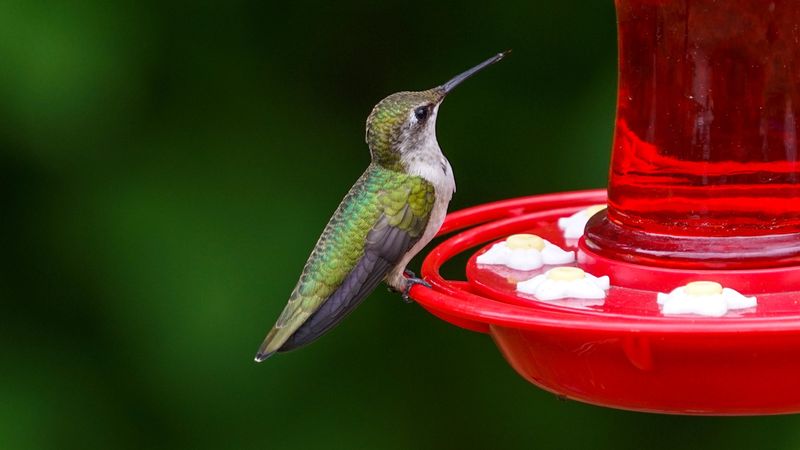
Strategic placement makes all the difference! Position your feeder at least three feet from branches, walls, or railings that could serve as ant highways.
Without these bridges, ants struggle to find access routes to your sweet nectar. Consider using a shepherd’s hook placed in an open area of your garden – this creates an isolated feeding station that’s much harder for ants to discover.
7. Use An Ant-Repellent Plant Nearby

Mother Nature offers her own ant solutions! Plant mint, tansy, or lavender in pots directly beneath your hummingbird feeder. The strong aromatic oils these plants release naturally repel ants without harming birds.
Mint spreads aggressively, so container planting prevents garden takeover. Bonus: these fragrant herbs attract butterflies while creating a beautiful, functional garden feature around your feeding station.
8. Clean The Feeder Regularly
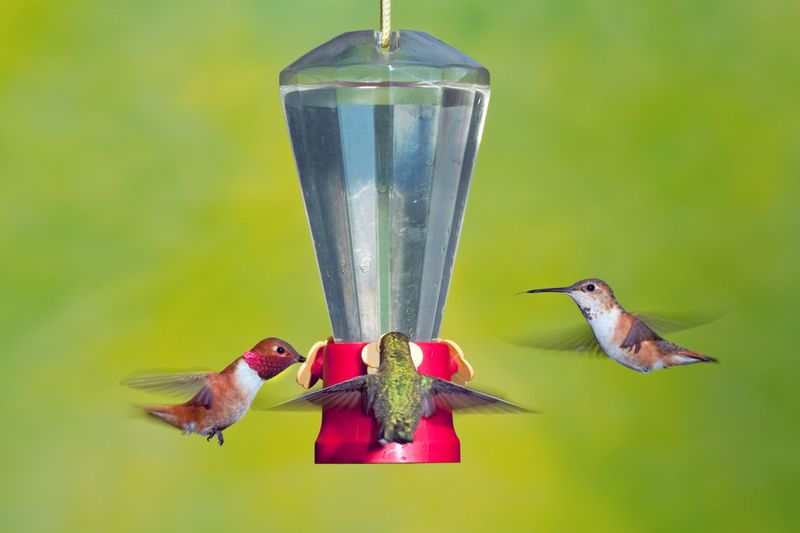
Sticky residue from dripping nectar creates irresistible ant trails. Commit to scrubbing your feeder thoroughly every 2-3 days with hot water to remove all sugar traces.
Focus especially on the feeding ports and base where nectar commonly drips. Regular cleaning not only deters ants but also prevents harmful mold growth that could sicken your hummingbird visitors. Your tiny feathered friends will appreciate the fresh dining experience!
9. Install A Raised Platform Or Tray
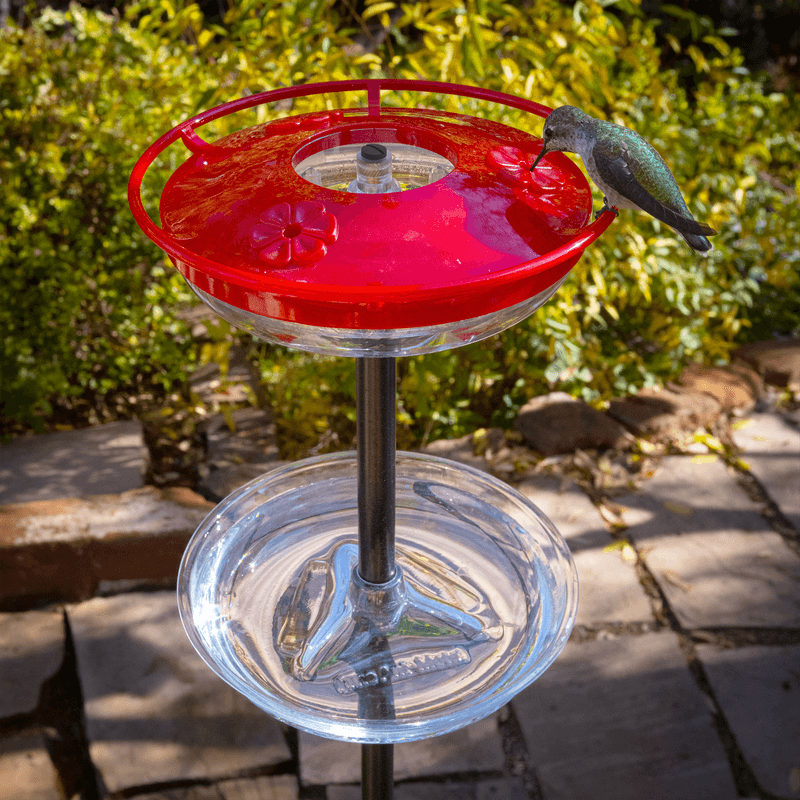
Create an ant-stopping moat system by placing your feeder on a raised platform with a water-filled tray beneath it. The water-filled tray becomes an impassable lake for crawling insects.
Garden centers sell decorative plant stands perfect for this purpose. For added protection, add a few drops of dish soap to the water – this breaks the surface tension, preventing ants from walking across the water’s surface like tiny tightrope walkers.
10. Add A Small Amount Of Soap To The Water

Transform your ant moat into an impenetrable barrier with a secret ingredient: just a tiny drop of mild dish soap. The soap breaks water’s surface tension, causing ants to sink immediately if they attempt to cross.
Use only unscented, mild soap and just enough to disrupt the surface – too much could harm hummingbirds if they contact it. This trick works wonderfully in commercial ant moats or homemade barriers using bottle caps.

